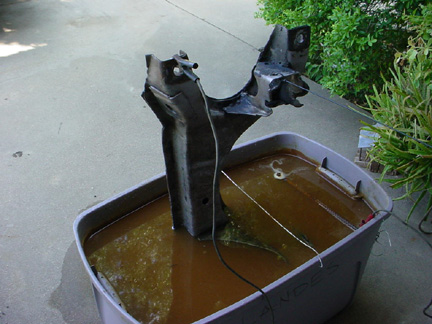BigWhip
New to Mopar land
Rust Removal using Electrolysis
Electrolysis is the process of removing rust from iron based metals using
a LOW voltage electrical current, washing soda and water.
This is a site for more information.
http://antique-engines.dickerson-design.com/electrol.asp
74 Sport Jerry: posted this link
http://myweb.tiscali.co.uk/andyspatch/rust.htm
Read, work safe and enjoy.
Post your projects using this process. I learn each day and every day
Whip
Electrolysis is the process of removing rust from iron based metals using
a LOW voltage electrical current, washing soda and water.
This is a site for more information.
http://antique-engines.dickerson-design.com/electrol.asp
74 Sport Jerry: posted this link
http://myweb.tiscali.co.uk/andyspatch/rust.htm
Read, work safe and enjoy.
Post your projects using this process. I learn each day and every day
Whip



















